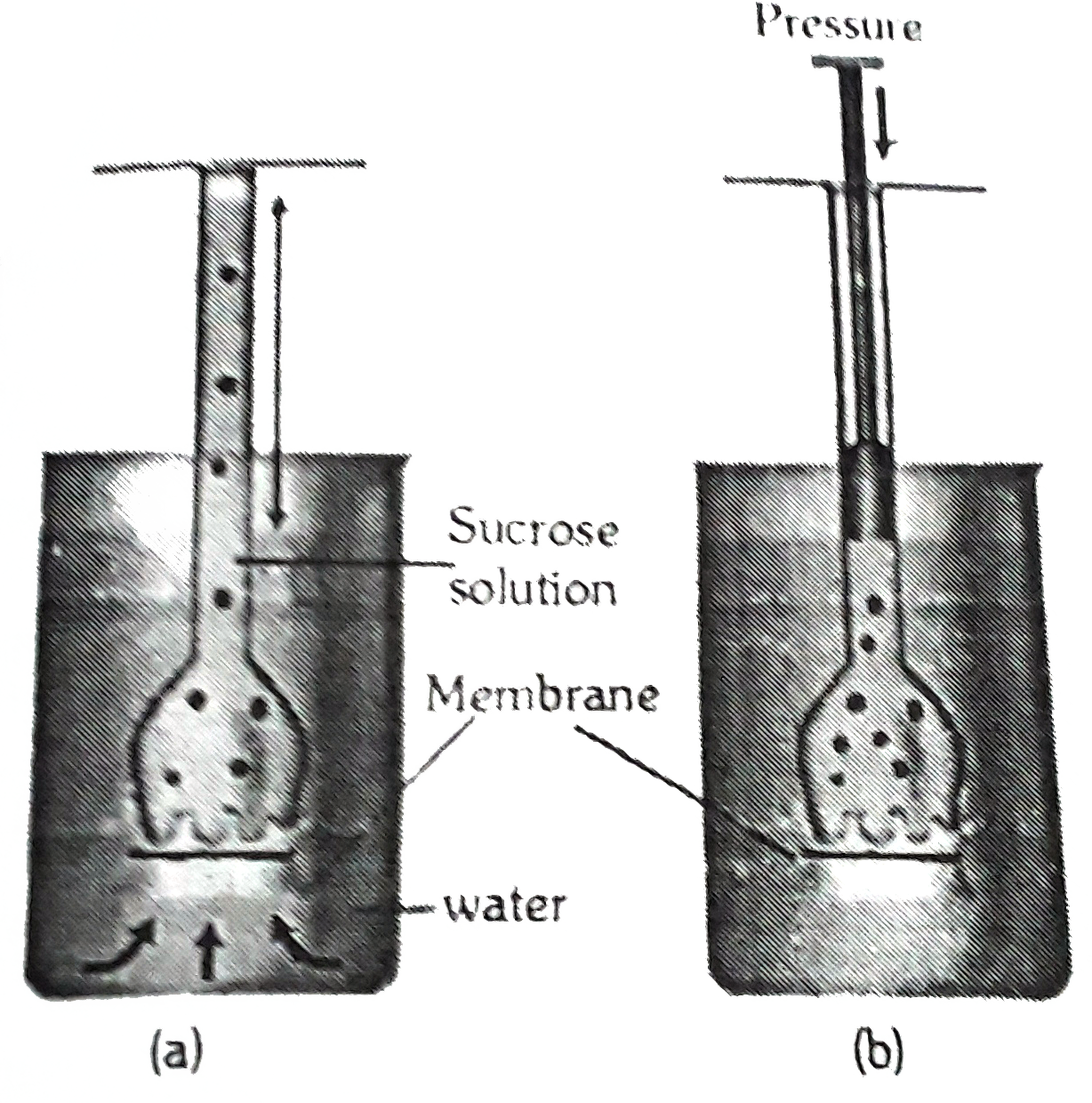Explain pressure flow hypothesis of translocation of sugar in plants.Solution in Gujrati
The accepted mechanism used for the translocation of sugars from source to sink is called the pressure flow hypothesis.

As glucose is prepared at the source (by photosynthesis). It is converted to sucrose (a dissacharide). The sugar is then moved in the form of sucrose into the companion cells and then into the living phloem sieve tube cells by active transport. This process of loading at the source produces a hypertonic condition in the phloem. Water in the adjacent xylem moves into the phloem by osmosis.
Water in the adjacent xylem moves into the phloem by osmosis. As osmotic pressure builds up the phloem sap will move to areas of lower pressure. As the sink osmotic pressure must be reduced. Again active transport is necessary to move the sucrose out of the phloem sap and sugars are removed. Water comes out of the phloem.
To summarise the movement of sugars in the phloem begins at the source, where sugars are loaded into a sieve tube. Loading of the phloem sets up a water potential gradient that facilitates the mass movement in the phloem.
Structure of Phloem : Phloem tissue is composed of sieve tube cells, which form long columns with holes in their end walls called sieve plates. Cytoplasmic strands pass through the holes in the sieve plates, so forming continuous filaments. As hydrostatic pressure in the phloem sieve tube increases, pressure flow begins and the sap moves through the phloem. Meanwhile, at the sink, incoming sugars are actively transported out of the phloem and removed as complex carbohydrates. The loss of solute produces a high water potential in the phloem and water passes out returning eventually to xylem.
Experiment : Girdling
A simple experiment was used to identify the tissues through which food is transported.
On the trunk of a tree a ring of bark up to a depth of the phloem layer can be carefully removed.
In the absence of downward movement of food the portion of the bark above the ring on the stem becomes swollen after a few weeks.
This simple experiment shows that phloem is the tissue responsible for translocation of food and that transport takes place in one direction, i.e., towards the roots.
Topper's Solved these Questions
- TRANSPORT IN PLANTS BOOK - KUMAR PRAKASHANCHAPTER - TRANSPORT IN PLANTS EXERCISE - Section-B Difference/Scientific Reasons
6 Videos
- TRANSPORT IN PLANTS BOOK - KUMAR PRAKASHANCHAPTER - TRANSPORT IN PLANTS EXERCISE - Section-C Definition/Explanation-terms/Location-Function
25 Videos
- THE LIVING WORLDBOOK - KUMAR PRAKASHANCHAPTER - THE LIVING WORLDEXERCISE - OBJECTIVE SECTION (FILL IN BLANKS)
9 Videos
Similar Questions

Study the given figure carefully and select the true and false statement(s) in this demonstration.
(a) Numerically this external pressure in figure (b) is equivalent to the osmotic potential of a solution, but the sign is opposite.
(b) Osmotic pressure is due to the solute concentration.
View SolutionDefine : Diffusion.
View SolutionA .......... is a collection of pressed, dried and preserved plants mounted on ……..
View SolutionExplain pressure flow hypothesis of translocation of sugars in plants.
View Solutionपादपों में शर्करा के स्थानांतरण के दाब प्रवाह परिकल्पना की व्याख्या कीजिए।
View SolutionExplain pressure flow hypothesis of translocation of sugars in plants.
View SolutionExplain pressure flow hypothesis of translocation of sugars in plants.
View SolutionExplain pressure flow hypothesis of translocation of organic solutes.
View Solution(a) Describe the pressure flow hypothesis of translocation of sugar in plants. (b) Explain the mechanism of closing and opening of stomata.
View SolutionExplain pressure flow hypothesis of translocation of sugars in Plants.
View SolutionExplain pressure flow hypothesis of translocation of sugars in plants.
View SolutionExplain pressure flow hypothesis of translocation of sugars in plants.
View SolutionExplain pressure flow hypothesis of translocation of sugars in plants.
View SolutionExplain pressure flow hypothesis of translocation of sugars in plants.
View SolutionExplain pressure flow hypothesis of translocation of sugars in plants.
View Solution
